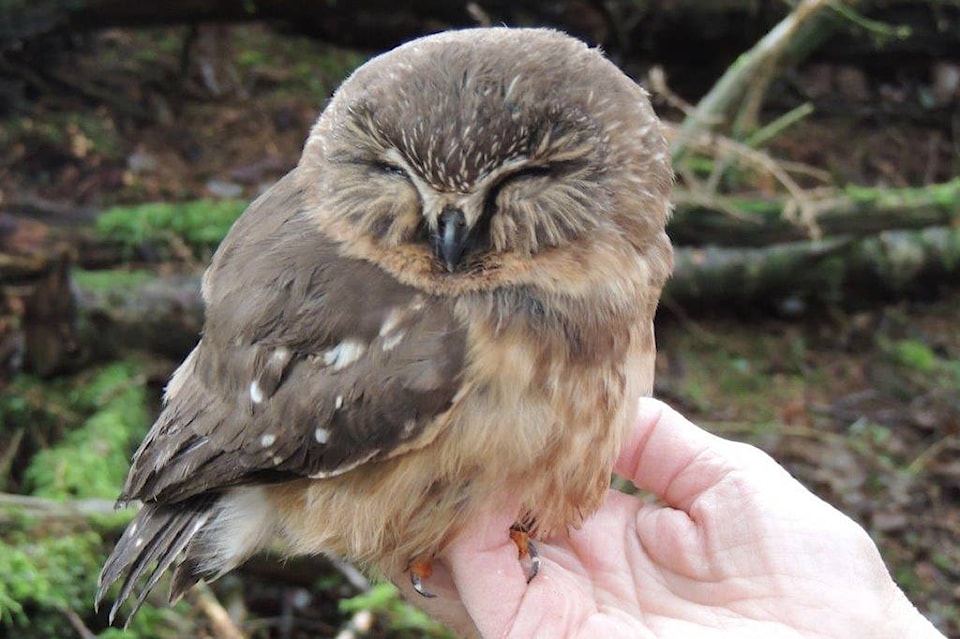By Margo Hearne
Dark-eyed Juncos are back at the feeder, Green-winged Teal are lined up along the tideline and the geese are in the meadow. After all the anxiety about whether or not there were any birds left in the world, there they are. This is very good.
Sharp-shinned hawks are also around, they nest on island. They are secretive; we have never come across a nest here but perhaps someone has? There is every good reason not to tell the world about it; some go to great lengths to steal eggs – even in this day and age — but it would be good to have the record.
And, for the record, saw-whet owls are tapping out their evening song. It’s hardly a song, more of a “tip-tip-tip” and the birds are often close by. One evening, in the quiet of a winter moonlight we heard at least five calling back and forth from the trees. They are mysterious little things, the only nesting owl on Haida Gwaii and precious at that.
Saw-whets lay from four to seven eggs, usually in the cavity of an old snag already chiselled out by a woodpecker. Males provide nearly all the food while females incubate and brood the young. They are friendly birds to have around; their diet consists mostly of small mammals, including juvenile rats and deer mice. They also eat sow bugs.
Saw-whets are often seen along the beach between the communities where they perch quietly and feed on intertidal isopods in the seaweed drift. They have an unfortunate tendency to fly low across the highway from the beach to the adjacent forest and are hit by passing traffic. Right now, you might hear them calling from the trees if you are out and about in the evening. The photo to the right shows an owl that had eaten a poisoned mammal; it didn’t survive. There are other ways of controlling rats without killing island birds and saw-whets are particularly vulnerable.
The small Aleutian geese are still here. A few distinct flocks are scattered throughout the island. They feed together, unlike the local Dusky Canada geese that wander at will. A small flock has been feeding beside Alder and Cedar Crescents all week and, even when an eagle scatters them for a while, they return to the same place and carry on. They may move on if the weather chills down as they head for warmer climes. They would be wise to stay; the sanctuary is here for them, and, except for the occasional marauding peregrine, they are safe enough.
Small birds are flittering among the branches. Chickadees, Golden-crowned Kinglets, and the occasional Ruby-crowned Kinglet. Among the flocks are Myrtle Warblers and quite a few Palm Warblers. Carey phoned to say that a lovely Western Tanager is now in Charlotte. A lovely bird and well worth seeing. There are a few records for here and they are special.
The Christmas Bird Counts are coming up with dates to be announced shortly. The 2019 Delkatla Sanctuary Society Tide Calendar is now available for sale ($15) with proceeds going to the Nature Centre. Thanks everyone!
